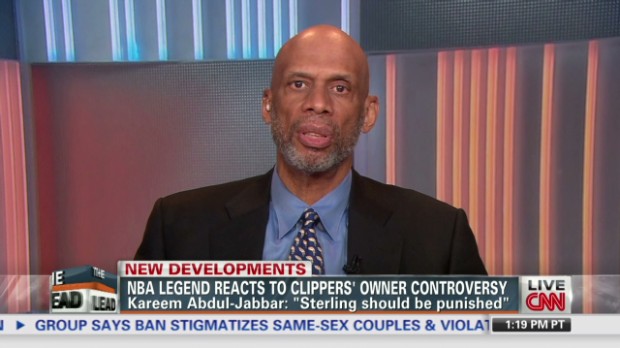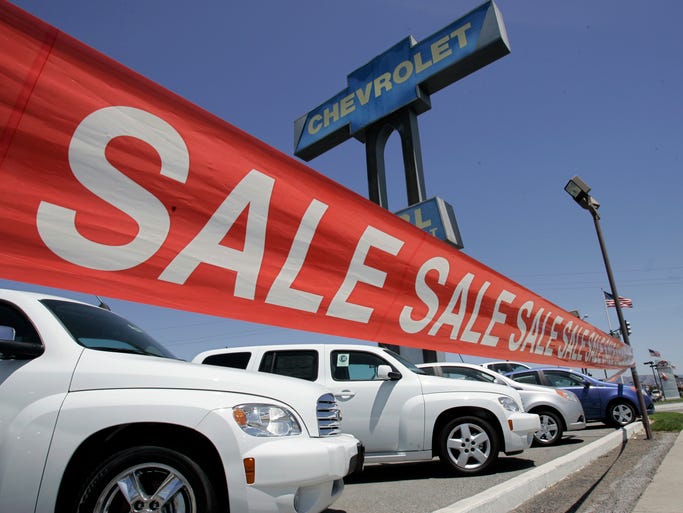DELAFIELD, Wis. (Stockpickr) -- Professional traders running mutual funds and hedge funds don't just look at a stock's price moves; they also track big changes in volume activity. Often when above-average volume moves into an equity, it precedes a large spike in volatility.
Major moves in volume can signal unusual activity, such as insider buying or selling -- or buying or selling by "superinvestors."
Unusual volume can also be a major signal that hedge funds and momentum traders are piling into a stock ahead of a catalyst. These types of traders like to get in well before a large spike, so it's always a smart move to monitor unusual volume. That said, remember to combine trend and price action with unusual volume. Put them all together to help you decipher the next big trend for any stock.
With that in mind, let's take a look at several stocks rising on unusual volume today.
Blackstone Group
Blackstone Group (BX) is an alternative asset manager and a provider of financial advisory services. This stock closed up 3.8% to $23.70 in Monday's trading session.
Top Services Stocks For 2015: Koninklijke Ahold NV (AHONY)
Koninklijke Ahold N.V. (Ahold), incorporated on April 29, 1920, is engaged in the operation of retail food stores in the United States and Europe through subsidiaries and joint ventures. Ahold�� retail operations are presented in four segments: Stop & Shop/Giant-Landover, Giant-Carlisle, Albert Heijn and Albert/Hypernova. During the fiscal year ended January 3, 2010 (fiscal 2009), it operated 2,909 stores. On February 8, 2010, Ahold�� Giant-Carlisle acquired 25 stores from Ukrop�� Super Markets.
Franchisees operated 783 of the Albert Heijn, Etos and Gall & Gall stores, 463 of which were either owned by the franchisees or leased independently from Ahold. Of the 2,446 stores, 20% were company-owned and 80% were leased. Ahold�� stores range in size from 20 to over 10,000 square meters. Albert Heijn is a food retailer in the Netherlands. Etos is a health and beauty retailer in the Netherlands. Gall & Gall is a wine and liquor specialist in the Netherlands. Stop & Shop is a supermarket brand, operating in six states in the northeast United States. Giant-Landover is a supermarket brand, operating in four states in the mid-Atlantic United States. Peapod is an online grocery delivery service working in partnership with Stop & Shop and Giant-Landover. It also serves the metropolitan areas of Chicago, Illinois; Milwaukee and Madison, Wisconsin, and the northern areas of Indiana.
Advisors' Opinion: - [By Rich Duprey]
As mentioned, Kroger is still swallowing Harris Teeter and has said it needs time to make more acquisitions. Royal Ahold (NASDAQOTH: AHONY ) is also said to be leery about doing large acquisitions these days, while Cerberus recently finished acquiring the Albertsons and Acme chains from SUPERVALU (NYSE: SVU ) �for $3.3 billion.
Top Services Stocks For 2015: ExlService Holdings Inc.(EXLS)
Exlservice Holdings, Inc., together with its subsidiaries, provides outsourcing and transformation services primarily in the United States and the United Kingdom. Its outsourcing services include claims processing, premium and benefit administration, agency management, account reconciliation, policy research, underwriting support, new business processing, policy servicing, trades/sub-account transactions, add-on processing, premium audit, billing and collection, and customer services in insurance and healthcare sector; back-office processing for customer operations, metering-related services and billing, debt recovery operations, imbalance management, and account management services in utilities sector; and servicing and processing various banking products, including residential mortgage lending, retail banking, credit cards, consumer finance, commercial lending, and investment management in banking and financial services sector. The company?s outsourcing services also co mprise processing transactions, including supply chain management, warehousing, transloading, transportation management, and international logistics services in transportation and logistics sector; managing and improving operational, financial, and analytical functions for travel management companies; and finance and accounting services, including accounts payable, accounts receivable, inter-company reconciliations, financial and statutory reporting, treasury management, and tax compliance. In addition, it offers transformation services consisting of decision analytics services, including data filtering, organization and synthesis, management information system reporting, trend and variance analysis, statistical and econometric modeling, and economic and financial markets research; finance transformation services; and operations and process excellence services. The company was founded in 1999 and is headquartered in New York, New York.
Advisors' Opinion: - [By Seth Jayson]
Calling all cash flows
When you are trying to buy the market's best stocks, it's worth checking up on your companies' free cash flow once a quarter or so, to see whether it bears any relationship to the net income in the headlines. That's what we do with this series. Today, we're checking in on Exlservice Holdings (Nasdaq: EXLS ) , whose recent revenue and earnings are plotted below.
- [By Seth Jayson]
Calling all cash flows
When you are trying to buy the market's best stocks, it's worth checking up on your companies' free cash flow once a quarter or so, to see whether it bears any relationship to the net income in the headlines. That's what we do with this series. Today, we're checking in on Exlservice Holdings (Nasdaq: EXLS ) , whose recent revenue and earnings are plotted below.
Time Warner Cable Inc., together with its subsidiaries, operates as a cable operator in the United States. It offers video, high-speed data, and voice services over its broadband cable systems to residential and commercial customers. The company provides a range of video services, including on-demand, high-definition (HD), and digital video recorder (DVR) services; residential high-speed data services with connection to the Internet; wireless mobile broadband Internet services; and digital phone services to residential customers. It offers video programming tiers and music services; high-speed data, networking, and transport services; and commercial digital phone service to small and medium-sized businesses under the Time Warner Cable Business Class brand. Further, Time Warner Cable Inc. sells advertising to various national, regional, and local customers. As of June 30, 2011, the company served approximately 14.5 million residential and commercial customers in the New Yor k State, the Carolinas, Ohio, southern California, and Texas. Time Warner Cable Inc. is based in New York, New York.
Advisors' Opinion: - [By Michael Calia]
Comcast Corp.(CMCSA) is much more likely to work with Charter Communications Inc.(CHTR) on a bid for Time Warner Cable Inc.(TWC) than to pursue an offer on its own, said a person familiar with the situation–a major boost to Charter’s hopes of winning the takeover battle.
- [By Lee Jackson]
Time Warner Cable Inc. (NYSE: TWC) said recently it is willing to take on more debt to make the right acquisition. That acquisition could be another cable company. The consensus price target is pegged at $126. Investors are paid a 2.3% dividend.
- [By WALLSTCHEATSHEET]
Time Warner Cable provides entertainment, voice, and high-speed data services to a growing customer base in the United States. The company lost 215,000 video subscribers in the fourth quarter. The stock has been pulling back in recent times and is currently trading sideways. Over the last four quarters, earnings have been mixed while revenues have been rising which has produced conflicting feelings among investors. Relative to its peers and sector, Time Warner Cable has been an average year-to-date performer. WAIT AND SEE what Time Warner Cable does this quarter.
- [By Steve Sears]
New stocks in what Goldman calls the “Hedge Fund VIP list,”�include Actavis (ACT), Baidu (BIDU), Berkshire Hathaway (BRK.B), Crown Castle International (CCI), Entergy Louisiana (ELB), �Equinix (EQIX), Facebook (FB), Fleetcor Technologies (FLT), W.R. Grace (GRA), MetLife (MET), Macquarie Infrastructure (MIC), Micron (MU), Time Warner Cable (TWC), and Time Warner (TWX).
Top Services Stocks For 2015: Pacer International Inc.(PACR)
Pacer International, Inc., together with its subsidiaries, provides asset-light transportation and logistics services primarily in North America, Asia, Europe, Australia, South America, and Africa. It operates in two segments, Intermodal and Logistics. The Intermodal segment offers intermodal rail transportation, local cartage and trucking, intermodal marketing services, container capacity, on-site operational services, and door-to-door shipment management services. As of December 31, 2011, its equipment fleet consisted of 1,592 double-stack railcars, 18,183 containers, and 12,783 chassis. The Logistics segment provides highway brokerage, warehousing and distribution, international freight forwarding, ocean and air shipping, and supply chain management services, as well as offers non-vessel-operating common carrier to end-user customers. The company markets and supports its services to cargo owners, steamship lines, truckload carriers, truck brokers, and freight forwarders , as well as other third party transportation service providers, such as intermodal marketing companies, third-party logistics companies, and shippers? agents through its direct sales and customer service representatives. Pacer International, Inc. was founded in 1974 and is headquartered in Dublin, Ohio.
Advisors' Opinion: Top Services Stocks For 2015: AutoNation Inc (AN)
AutoNation, Inc. (AutoNation), incorporated on May 30, 1991, is an automotive retailer in the United States. As of December 31, 2011, the Company had three operating segments: Domestic, Import, and Premium Luxury. As of December 31, 2011, it owned and operated 258 new vehicle franchises from 215 stores located in the United States, predominantly in metropolitan markets in the Sunbelt region. Its stores sell 32 different brands of new vehicles. The core brands of vehicles that it sells, representing approximately 90% of the new vehicles that it sold during the year ended December 31, 2011, was manufactured by Ford, Toyota, Nissan, General Motors, Honda, Mercedes-Benz, BMW, and Chrysler. The Company offers a diversified range of automotive products and services, including new vehicles, used vehicles, parts and automotive repair and maintenance services , and automotive finance and insurance products, which includes the arranging of financing for vehicle purchases through third-party finance sources. The Company retailed approximately 400,000 new and used vehicles through its stores in 2011. It acquired one automotive retail franchise and related assets during 2011.
Domestic segment consists of retail automotive franchises that sell new vehicles manufactured by General Motors, Ford, and Chrysler. Its Import segment is comprised of retail automotive franchises that sell new vehicles manufactured primarily by Toyota, Honda, and Nissan. Its Premium Luxury segment is consists of retail automotive franchises that sell new vehicles manufactured primarily by Mercedes-Benz, BMW, and Lexus. The franchises in each segment also sells used vehicles, parts and automotive repair and maintenance services, and automotive finance and insurance products. For the year ended December 31, 2011, Domestic revenue represented 34% of total revenue, Import revenue represented 37% of total revenue, and Premium Luxury revenue represented 28% of total revenue. Corporate and other is consist of its other businesses, incl! uding collision centers, e-commerce activities, and an auction operation, each of which generates revenues, as well as unallocated corporate overhead expenses and retrospective commissions for certain financing and insurance transactions that it arranges under agreements with third parties.
The Company�� stores acquires vehicles for retail sale either directly from the applicable automotive manufacturer or distributor or through dealer trades with other stores of the same franchise. it acquires used vehicles from customer trade-ins, auctions, lease terminations, and other sources. It recondition used vehicles acquired for retail sale at its stores��service facilities and capitalize costs related thereto as used vehicle inventory. Through its VVOs, which are located on existing store facilities, it sells vehicles that it would have traditionally wholesaled with an average retail price lower than that of used vehicles it typically retail. Used vehicles that the Company do not sell at its stores or VVOs generally are sold at wholesale prices through auctions.
The Company offers a variety of automotive finance and insurance products to its customers. The Company arranges for its customers to finance vehicles through installment loans or leases with third-party lenders, including the vehicle manufacturers��and distributors��captive finance subsidiaries, in exchange for a commission payable to the Company. It also offers its customers various vehicle protection products, including extended service contracts, maintenance programs, guaranteed auto protection (GAP, this protection covers the shortfall between a customer�� loan balance and insurance payoff in the event of a casualty), tire and wheel protection, and theft protection products. The vehicle protection products that its stores offers to customers are underwritten and administered by independent third parties, including the vehicle manufacturers��and distributors��captive finance subsidiaries. The Company sells t! he produc! ts on a straight commission basis; however, it also participate in future underwriting profit for certain products pursuant to retrospective commission arrangements. Commissions that it receives from these third-party providers may be subject to chargeback, in full or in part, if products that it sells, such as extended service contracts, are cancelled. Its stores also provide a range of vehicle maintenance, repair, paint, and collision repair services, including warranty work that can be performed only at franchised dealerships and customer-pay service work. The Company has entered into framework agreements with vehicle manufacturers and distributors. It operates each of its new vehicle stores under a franchise agreement with a vehicle manufacturer or distributor.
Advisors' Opinion: - [By Brian Pacampara]
AutoNation (NYSE: AN )
Penske Automotive Group (NYSE: PAG )
Sources: S&P Capital IQ and Motley Fool CAPS.
- [By Seth Jayson]
AutoNation (NYSE: AN ) reported earnings on April 18. Here are the numbers you need to know.
The 10-second takeaway
For the quarter ended March 31 (Q1), AutoNation beat slightly on revenues and beat expectations on earnings per share.
- [By Sally Jones] ng>Predictability: 1 out of 5 Stars
Up 9% over 12 months, AutoNation Inc. has a market cap of $5.86 billion; its shares were traded at around $48.20 with a P/E ratio of 17.70. The company does not pay a dividend.
Incorporated in 1991, AutoNation Inc. is an automotive retailer in the US. The company owns and operates 265 new vehicle franchises from 221 stores located in the United States, as of December 31, 2012. AutoNation Inc. offers a range of automotive products and services, including new vehicles, used vehicles, parts and automotive services, and automotive finance and insurance products. The company also arranges financing for vehicle purchases through third-party finance sources.
The company reported financial results for the third quarter of 2013 with a 14% year-over-year increase in revenue at $4.5 billion. Operating income was reported at $187 million, also up 14% compared to the third quarter of 2012. AutoNation reported net income for the third quarter of 2013 at $93 million, up from $82 million in the same quarter a year ago. Earnings of $0.75 per share were also up 14% over $0.66 per share in the third quarter of 2012.
The company�� total vehicle sales have also increased by 14% over the same quarter of 2012, and the nation�� largest automotive retailer plans to buy a Honda store and a Hyundai store in Chicago, Illinois, set for completion in the last quarter of 2013, bringing in additional annual revenue of $85 million.
AutoNation�� chairman and CEO Mike Jackson, commented in a company press release, ��e delivered double-digit growth in EPS and operating income in the third quarter of 2013 compared to the prior year, driven by gross profit growth in all of our business sectors.��/p>
Tracking share price, revenue and net income:
[ Enlarge Image ]
Edward Lampert�� average 12-month return is currently 34.5%. His top buys, sells and holdings in graphic summary:
GuruFocus Real Time Pic
Top Services Stocks For 2015: GASFRAC Energy Services Inc (GFS)
GASFRAC Energy Services Inc. (GASFRAC) is an oil and gas service company, whose business is to provide liquid petroleum gas (LPG) fracturing services to oil and gas companies in Canada and the United States of America. As of December 31, 2011, GASFRAC had three 32 tons and nine 100 tons sand storage vessels, 47 fracturing pumpers, 150 LPG storage tanks and related equipment. GASFRAC�� services are marketed and operated under the name of its wholly owned subsidiary GASFRAC Energy Services Limited Partnership. The Company has commercialized the use of LPG as the fracturing fluid. The Company�� subsidiaries include GASFRAC Services GP Inc., GASFRAC US Holdings Inc., GASFRAC Inc., GASFRAC Energy Services (US) Inc. and GASFRAC Luxembourg S.a.r.l.
Advisors' Opinion: - [By Sofia Horta e Costa]
G4S Plc (GFS) dropped 1.7 percent to 225.6 pence. Goldman Sachs Group Inc. reiterated its ��onviction sell��recommendation on the provider of security services, citing continued pressure on its profit margin in the second quarter.
- [By Sarah Jones]
G4S Plc (GFS) sank 15 percent to 260 pence. The security company reported a lower operating margin for the first quarter, citing challenging economic and trading conditions in continental Europe. It expects the margin trend to continue for the full year.
Top Services Stocks For 2015: United Continental Holdings Inc.(UAL)
United Continental Holdings, Inc., through its subsidiaries, engages in the provision of passenger and cargo air transportation services. As of February 24, 2011, it operated a total of approximately 5,675 flights a day to 372 airports on 6 continents from their hubs in Chicago, Cleveland, Denver, Guam, Houston, Los Angeles, New York, San Francisco, and Tokyo, as well as in Washington, D.C. The company was formerly known as UAL Corporation and changed its name to United Continental Holdings, Inc. on October 1, 2010. United Continental Holdings, Inc. was founded in 1934 and is headquartered in Chicago, Illinois.
Advisors' Opinion: - [By Tim Beyers and Erin Miller]
While regulators aren't taking jets out of service to comply with the order, investors can hardly be blamed for being nervous in the wake of troubles with the 787. Leading 737 filers such as Southwest Airlines (NYSE: LUV ) and United Continental (NYSE: UAL ) should remain unaffected.
- [By Ben Levisohn]
United Continental (UAL) was supposed to be the loser among the soon-to-be big-three airlines. Not today, however.
Bloomberg United’s shares have gained 4.9% to $38.17 today at 1:53 p.m., while Delta Air Lines (DAL) has dropped 0.1% to $27.97, AMR Corp. (AAMRQ) has advanced 0.4% to $12.25 and US Airways (LCC) is down 0.7% at $24.23.
United’s rise is being attributed to its investor day presentation where it outlined its plan to cut costs. Bloomberg has the details:
United Continental Holdings Inc. climbed to the highest price since 2008 after the world�� biggest airline said it would cut $2 billion in annual spending.
Half the savings will come from a 7 percent reduction in fuel expense as it flies newer, more efficient planes such as�Boeing Co.�� (BA) 787 Dreamliner and existing aircraft are equipped with winglets to boost conservation. At a presentation in New York today, the Chicago-based carrier also said it expects to boost fee revenue by $700 million a year…
United�� plan, which includes an unspecified return of cash to shareholders in 2015, was outlined after a series of operational issues snarled flights and drove away some customers and four public computer disruptions since the airline switched to a new reservation system in March 2012.
S&P Capital IQ’s Jim Corridore calls it a great plan with one tiny problem-execution. He writes:
UAL today is outlining plans to cut costs, increase profitability and enable the return of cash to shareholders by 2015. UAL will redeploy aircraft out of some Asia markets to more profitable routes, plans to cut fuel consumption, and improve productivity. UAL aims to improve profitability from current levels by 2X-4X over the next four years. We are very positive on these stated goals, but where UAL has run into problems over the past two years is in execution of its stated plans. We would like to see some traction on these plans.
Top Services Stocks For 2015: K12 Inc (LRN)
K12 Inc. (K12), incorporated in December 1999, is a technology-based education company. K12 offers curriculum, software systems and educational services designed to facilitate individualized learning for students primarily in kindergarten through 12th grade, or K-12. The Company provides a continuum of technology-based educational products and solutions to districts, public schools, private schools, charter schools and families. Its products include Curriculum, Pre-K and K-8 Courses, Online School Platform-Learning Management System, High School Courses, Innovative Learning Applications, School Management Systems and PEAK12. Its managed public schools includes Full-time virtual schools and Blended schools, which includes Flex schools, Passport schools, Discovery schools and Other blended schools. Its institutional Business includes K12 curriculum, Aventa curriculum, A+ curriculum, Middlebury joint venture, Pre-kindergarten and Post-secondary. Its international and private pay business includes Managed private schools, The Keystone School, George Washington University Online HS, K12 International Academy, IS Berne, WEB and Independent course sales (Consumer). In April 2011, it acquired the operations of the International School of Berne (IS Berne).
Curriculum
K12 has the digital curriculum portfolio for the K-12 online education industry. The K12 curriculum consists of online lessons, offline instructional kits and materials, and lesson guides and other ancillaries. The Company offers a catalog of courses designed to teach concepts to students from pre-kindergarten through 12th grade, as well as curriculum for use in post-secondary online programs. A single year-long K12 course generally consists of 120 to 180 instructional lessons. Each lesson is designed to last approximately 45 to 60 minutes, although students are able to work at their own pace. With the acquisition of the curriculum portfolios of KCDL (Aventa), AEC (A+) and Kaplan Virtual Education (KVE), as well as the MI! L joint venture, the Company has nearly 700 courses across kindergarten, elementary, middle and high school, including world languages. This combined portfolio contains over 100,000 hours of instructional content and over one million visual, audio and interactive instructional elements in the Company's asset repository.
The Company's K12 online lessons or curricula are accessed through a learning management platform, which the Company calls its Online School (OLS) for K- 8students and the eCollege platforms for high school students, as well as a number of other common industry platforms for students who access Aventa and A+ curricula. Many of the Company's courses utilize learning kits in conjunction with the online lessons to maximize the effectiveness of its learning systems. In addition to receiving access to the Company's online lessons through the Internet, each K-8 student receives a shipment of materials, including textbooks, art supplies, laboratory supplies (such as microscopes, scales, science specimens) and other reference materials which are referred to and incorporated in instruction throughout its curriculum. The Company's courses are generally paired with a lesson guide. Lesson guides work in coordination with the online lessons and include overview information for learning coaches, lesson objectives, lesson outlines and activities, answer keys to student exercises and suggestions for explaining difficult concepts to students.
Pre-K and K-8 Courses
From pre-kindergarten through 8th grade, the Company's courses are generally categorized into seven major subject areas: English and language arts, mathematics, science, history, art, music and world languages. The Company's curriculum includes all of the courses that students need to complete their core kindergarten through 8th grade education; a new pre-K offering students to core subjects through cross-curricular thematic units, building initial and fundamental relationships among concepts. Its learning! systems ! offer the flexibility for each student to take courses at different grade levels in a single academic year, providing flexibility for students to progress at their own level and pace within each subject area.
The first phase of the Company's K12 second generation elementary language arts program is designed to deliver interactivity and make instruction even more engaging while integrating rewards, interactive practice and a virtual world. The Company's Fundamentals of Geometry and Algebra course completes its K-8 math offering. These courses support students at various skill levels through targeted, timely remediation, embody the Common Core State Standards (CCSS) and include media integration. In addition, the flexibility of the Company's learning systems allows the Company to tailor its curriculum to state specific requirements. For example, the Company has developed 62 courses specifically created for the public schools standards in 13 states. In addition to the ongoing evolution of the Company's K-5 Math+ program, the Company has also created over 80 custom Math+ sequences to serve specific state needs. The Company continues to migrate K12 K-8 courses from its legacy content management system (CMS) to its new CMS.
Online School Platform-Learning Management System
For the Company's K12 curriculum users in grades K-8, the Company provides a learning management system, its OLS platform. The OLS platform is an adaptive, intuitive, Web-based software platform that provides access to the Company's online lessons, its lesson planning and scheduling tools, as well as its progress tracking tool which serves a key role in assisting parents and teachers in managing each student's progress. The OLS is also the central structure through which students, parents, teachers and administrators interact using K-mail and Class Connect (the Company's integrated synchronous session scheduler). Students, parents and teachers can access the Company's online tools and lessons through t! he OLS fr! om anywhere with an Internet connection. The Company licenses a third-party learning management system for uses in its high school program.
High School Courses
The curriculum available to high school students is broader and varies from student to student. Students also are able to select from a range of electives. The Company has augmented its lab program for lab science courses with the creation of alternate kit-free science labs for the formerly kit-based high school science labs in order to provide a more flexible and robust lab program across its physical science, earth science, biology, chemistry and physics courses. The Company's overall lab program includes traditional kit-based labs based on either shipped-in or household materials, virtual labs, video-based labs, data-collection and data-manipulation labs, and field studies. Across all subject areas, the K12 core curriculum accounts for approximately 90% of the Company's high school course enrollments. It also offers curriculum marketed as its Aventa Learning by K12 product line. Aventa courses are written to national academic standards and each of Aventa's 22 AP courses has been reviewed and approved by The College Board. Aventa's online courses are developed by subject matter experts designed by multimedia teams and delivered by high school instructors. Aventa classes are primarily delivered over the Internet and use a variety of interactive elements to keep students engaged throughout.
The Company has A+ courseware, which is in use in over 5,000 public and private K-12 schools, charter schools, colleges, correctional institutions, centers of adult literacy, military education programs and after-school learning centers. The A+nyWhere Learning System provides an integrated offering of instructional software and assessment for reading, mathematics, language arts, science, writing, history, government, economics and geography for grade levels K-12. In addition, AEC provides assessment testing and instructi! onal cont! ent for the General Educational Development (GED) test. AEC products are designed to provide for LAN, WAN and Internet delivery options and support Windows and Macintosh platforms. Spanish-language versions are available for mathematics and language arts for grade levels 1-6.
The Company offers online world language courses and summer immersion language instruction programs through its MIL joint venture. In addition to offering powerspeaK12 language courses, this venture also offers innovative, online language programs for high school and middle school students based on the Middlebury College pedagogy. The new courses use instructional tools such as animation, music, videos and other elements that immerse students in new languages. Beginner French, Chinese and Spanish for high school students, as well as Chinese, French, Latin, Spanish and German courses for middle and high school students are available and additional courses are in development. The joint venture has expanded the Middlebury-Monterey Language Academy (MMLA), a foreign language immersion summer program for middle and high school students, which includes a day academy for middle school students, as well as the Company's four-week residential academy with instruction in Arabic, Chinese, French, German, Italian and Spanish at multiple college campuses.
Innovative Learning Applications
The Company has created tools that allow for more rapid mobile and tablet curriculum or content deployment across platforms for deeper markets penetration. Seven additional mobile applications were delivered during the fiscal year ended June 30, 2012 (fiscal 2012), for a total of 15 applications available for download. These apps have been downloaded over 400,000 times. It offers applications for the iPhone, Android phones and Android tablet marketplaces, adapting many of its curriculum features for the mobile application space. An active educational games initiative is delivering new methods for engagement, practice and r! eview of ! K-12 concepts, including narrative/immersive styles, rewards, persistent data, complex algorithms. The Company has delivered a total of nine interactive games and an innovative review and practices portal called Noodleverse. Noodleverse includes over 1,700 activities and is designed for K-2 students in conjunction with a new language arts program.
The Company has delivered alternatives for its educational partners who desires materials-free curriculum. This includes converting over 59 existing materials-based high school Science labs into interactive virtual labs and video lab This laboratory is performed at a lab bench with all the materials and with the same procedures high school students would use in a physical chemistry laboratory. During fiscal 2012, the Company had converted 35 K12 textbooks used across 57 courses into an electronic format, including textbooks, reference guides, literature readers and lab manuals. This digital delivery ability enables the Company to offer options to the Company's customers through interactive online books that enhance the student's reading experience reinforce the student's learning approach and create a new method for delivering book and print materials. Each offline book is converted into an electronic book format with a custom user interface to be viewed through a standard Web browser or a commercially available electronic reader (Kindle and Nook).
The Company has learning management systems and can build courses that are adaptive, which enable individualized learning experiences as the course adapts at key points to student behavior and input. The Company's MARK12 reading remediation product captures individual students' successes and challenges as they practice phonemic awareness, alphabetic principles, accuracy and fluency, vocabulary and comprehension. The program serves the individual student more exercises, practice and review in areas of difficulty. During fiscal 2012, the Company launched a pilot program for school year call! ed Nation! al Math Lab, designed as a controlled study with randomly selected treatment and control groups from a pool of students in grades 5-10 identified as significantly below grade level in math. The Company continues to explore opportunities to enhance student engagement through strategic use of relevant multimedia. Multimedia is specifically used as appropriate for the subject matter.
School Management Systems
School Management Systems (SAMS) is the Company's student information system. SAMS is integrated with the OLS and several other systems, including the Company's Online Enrollment System that allows parents to complete school enrollment forms online and its order management system that generates orders for learning kits and computers to be delivered to students. SAMS stores student-specific data and is used for a range of functions, including enrolling students in courses, assigning progress marks and grades, tracking student demographic data, and generating student transcripts. The Company has TotalView a range of online applications that provides administrators, teachers, parents and students a unified view of student progress, attendance, communications, and learning kit shipment tracking. TotalView includes a means of documenting student engagement in required classroom activities, identification of those students struggling with grade level state content standards, and previous year's performance on state tests. TotalView also includes K-mail, the Company's internal communications system. Through K-mail, administrators and teachers can communicate electronically with learning coaches and students. TotalView also includes an enrollment processing and tracking tool that allows it to closely monitor and manage the enrollment process for new students.
PEAK12
The Company has an online learning solution called PEAK12. This solution simplifies a district's management of online learning by consolidating multiple solutions on a single platform. It allow! s adminis! trators and teachers to manage enrollments, programs and performance tracking, alerts and reporting across multiple online solutions from a single solution. In addition, through the PEAK12 library, districts can search, build, provision and publish content or course modifications or new course solutions using various online learning assets. PEAK12 provides unparalleled capabilities for districts wanting to operate multiple solutions or catalogs from a single place and offers personalization features that can be managed at the district, school or teacher level.
The Company competes with DeVry, Inc., Pearson PLC, White Hat Management, LLC, National Network of Digital Schools Management Foundation Inc., Apex Learning Inc., Compass Learning, E2020 Inc., OdysseyWare, PLATO Learning, Inc., Rosetta Stone Inc., Houghton Mifflin Harcourt, McGraw-Hill Companies, Pearson PLC., The Laurel Springs School, the National Connections Academy and Florida Virtual School.
Advisors' Opinion: - [By Eric Volkman]
Less than two weeks after losing CFO Harry Hawks, K12 (NYSE: LRN ) has named a replacement. James Rhyu will take up that post, and also serve as executive vice president starting in early June.
- [By Roberto Pedone]
One stock that's starting to trend within range of triggering a major breakout trade is K12 (LRN), which offers proprietary curriculum and educational services created for online delivery to students in kindergarten through 12th grade. This stock has been a top target of the bears over the last three months, with shares down sharply by 43%.
If you take a look at the chart for K12, you'll notice that this stock has been trending sideways for the last month, with shares moving between $19.47 on the downside and $21.62 on the upside. Shares of LRN have now just started to spike higher back above its 50-day moving average of $20.09 a share. That move is quickly pushing shares of K12 within range of triggering a major breakout trade above the upper-end of its recent sideways trading chart pattern.
Traders should now look for long-biased trades in LRN if it manages to break out above some near-term overhead resistance levels at $20.77 to $21.17 a share, and then once it takes out more key overhead resistance at $21.62 a share with high volume. Look for a sustained move or close above those levels with volume that hits near or above its three-month average volume of 519,295 shares. If that breakout hits soon, then LRN will set up to re-fill some of its previous gap down zone form October that started just above $28 a share. This stock could easily make a monster move if it breaks out into that gap with volume, just like CNDO did.
Traders can look to buy LRN off any weakness to anticipate that breakout and simply use a stop that sits right below some key near-term support levels at $19.47 or around $19 a share. One can also buy LRN off strength once it starts to take out those breakout levels with volume and then simply use a stop that sits a comfortable percentage from your entry point.
Top Services Stocks For 2015: Franklin Covey Company (FC)
Franklin Covey Co. provides training and consulting solutions to address leadership, execution, productivity, trust, customer loyalty, sales performance, and education problems worldwide. The company also offers clients with training in management skills, relationship skills, and individual effectiveness, as well as personal-effectiveness literature and electronic educational solutions. In addition, it sells a suite of individual-effectiveness and leadership-development training products; and books, e-books, audio media, downloadable and paper-based tools, content-rich software applications for smart phones and other handheld devices, training accessories, and other related products. The company delivers its products and services through onsite presentations, facilitators, international licensees, e-learning, public workshops, custom solutions, intellectual property licenses, and media publishing methods to organizational clients, including corporations, governmental agenc ies, educational institutions, and other organizations, as well as individual clients. Franklin Covey Co. was founded in 1983 and is headquartered in Salt Lake City, Utah.
Advisors' Opinion: - [By Laura Brodbeck]
Tuesday
Earnings Expected: IHS Inc. (NYSE: IHS), Commercial Metals Company (NYSE: CMC), Franklin Covey Company (NYSE: FC), Micron Technology, Inc. (NASDAQ: MU), Apollo Group, Inc. (NASDAQ: APOL) Economic Releases Expected: French consumer confidence, German unemployment rate, Brazilian CPI, Canadian trade balance Wednesday
- [By Seth Jayson]
Calling all cash flows
When you are trying to buy the market's best stocks, it's worth checking up on your companies' free cash flow once a quarter or so, to see whether it bears any relationship to the net income in the headlines. That's what we do with this series. Today, we're checking in on Franklin Covey (NYSE: FC ) , whose recent revenue and earnings are plotted below.
Top Services Stocks For 2015: Trinity Industries Inc.(TRN)
Trinity Industries, Inc. provides products and services to the industrial, energy, transportation, and construction sectors primarily in the United States, Canada, Mexico, the United Kingdom, Singapore, and Sweden. The company?s Rail Group manufactures and sells railcars, including auto carrier, box, gondola, hopper, intermodal, specialty, and tank cars; and railcar components, such as couplers and axles. This group also offers repair and coating services. It primarily serves railroads, leasing companies, and industrial shippers of various products. Trinity Industries? Railcar Leasing and Management Services group leases tank cars and freight cars to industrial shippers and railroads operating in petroleum, chemical, agricultural, and energy industries with a fleet of 54,595 owned or leased railcars; provides management and administrative services; and manages railcar fleets on behalf of third parties. The company?s Construction Products group produces ready mix concret e; produces and distributes construction aggregates, including crushed stone, sand and gravel, asphalt rock, and specialty sands and gravel; manufactures highway products and other steel products for infrastructure related projects; supplies ready mix concrete; and provides hot-dip galvanizing services for fabricated steel materials. It primarily serves contractors and subcontractors in the construction and foundation industry. Trinity Industries? Inland Barge group manufactures inland barges; and fiberglass reinforced lift covers. It serves commercial marine transportation companies. The company?s Energy Equipment group manufactures structural wind towers, tank containers, and tank heads for pressure vessels; fertilizer containers; and tank heads for non-pressure vessels, LPG tanks, and utility, traffic, and lighting structures. It serves turbine producers, as well as industrial plants, utilities, residences, and small businesses. The company was founded in 1933 and is he adquartered in Dallas, Texas.
Advisors' Opinion: - [By Eric Volkman]
Trinity Industries (NYSE: TRN ) is rolling a higher dividend down the rails. The company has declared a distribution of $0.13 per share of its common stock. This will be paid on July 31 to shareholders of record as of July 15.�That amount represents an 18% improvement over the previous payout, which was handed out at the end of April and totaled $0.11 per share.
- [By Holly LaFon]
Another area that is intriguing to us is the North American energy sector which looks to have a number of interesting catalysts currently. While the energy sector is at present only a modest overweight in the portfolios, we have been encouraged by several trends taking place for a number of years. These positive developments are also having an impact that goes far beyond the energy sector itself. Many believe that the U.S. will become energy independent and possibly a net exporter of natural gas and oil (currently restricted by law) in the next decade. This opinion is based primarily on the development of new drilling techniques (i.e. horizontal drilling, and high pressure fracking) that have enabled companies to access oil and natural gas reserves in shale formations that were previously not economically viable. The ability to tap into this acreage is a game-changer in our view and is already having a tremendous impact on the economy. Employment rates in these mostly rural areas surrounding the shale basins are very high and companies thus find hiring extremely competitive. Strong labor markets tend to create strong local economies. Oil States International (OIS) has been able to capitalize on this trend by providing housing and other services to oil service workers that are in demand in the area. CST Brands (CST) operates gas stations in Texas, but it is increasingly looking to broaden its product offering beyond fuel. Rail companies like Union Pacific (UNP), Canadian Pacific (CP), Kansas City Southern (KSU) and Genesee and Wyoming (GWR) have also benefited substantially. Given that shale areas are rural and often lacking infrastructure, substantial investment must be made to support drilling and production activities. Without pipelines in place, railroads have been the primary takeaway mechanism for moving production to the various clusters of refining capacity around the United States. In order to serve this demand, massive investment in railcars has been nee
 NBA Commissioner: Donald Sterling banned NEW YORK (CNNMoney) The NBA dropped a heavy hammer on Los Angeles Clippers owner Donald Sterling. He has been banned for life from the league. He was fined $2.5 million.
NBA Commissioner: Donald Sterling banned NEW YORK (CNNMoney) The NBA dropped a heavy hammer on Los Angeles Clippers owner Donald Sterling. He has been banned for life from the league. He was fined $2.5 million.  Abdul-Jabbar on 'plantation mentality'
Abdul-Jabbar on 'plantation mentality' ![]()



 Popular Posts: Store Your Cash In These 3 Self-Storage REITsMore Dividend Growth Ahead From KMI Stock3 Pros, 3 Cons For TRP Stock & The Keystone XL Pipeline Recent Posts: The Sun Is Setting for Chinese Solar Stocks 4 Stocks to Buy to Hedge Against Higher Gas Prices Store Your Cash In These 3 Self-Storage REITs View All Posts
Popular Posts: Store Your Cash In These 3 Self-Storage REITsMore Dividend Growth Ahead From KMI Stock3 Pros, 3 Cons For TRP Stock & The Keystone XL Pipeline Recent Posts: The Sun Is Setting for Chinese Solar Stocks 4 Stocks to Buy to Hedge Against Higher Gas Prices Store Your Cash In These 3 Self-Storage REITs View All Posts  Source: Flickr
Source: Flickr  As one of the nation's largest independent downstream players, Valero (VLO) is in a prime position to profit from exporting refined petroleum products and rising gas prices. In fact, VLO has made sending gasoline and diesel overseas one of its main pillars of profit.
As one of the nation's largest independent downstream players, Valero (VLO) is in a prime position to profit from exporting refined petroleum products and rising gas prices. In fact, VLO has made sending gasoline and diesel overseas one of its main pillars of profit. As if ConocoPhillips (COP) spinoff Phillips 66 (PSX) needed any more positives. PSX is already becoming a major player in liquefied petroleum gas (LPG) and propane exports. Meanwhile, it's a major midstream and natural gas processor as well. All of these refining activities are boosting the firm's bottom line.
As if ConocoPhillips (COP) spinoff Phillips 66 (PSX) needed any more positives. PSX is already becoming a major player in liquefied petroleum gas (LPG) and propane exports. Meanwhile, it's a major midstream and natural gas processor as well. All of these refining activities are boosting the firm's bottom line. It shouldn't come as a shock that midstream giant Enterprise Products Partners, LP (EPD) is one of the best ways to play rising gas prices. When you're one of the largest midstream master limited partnerships (MLPs) in the country, you have your hands in a variety of different energy commodities. That includes pipelines that transport refined gasoline to export terminals.
It shouldn't come as a shock that midstream giant Enterprise Products Partners, LP (EPD) is one of the best ways to play rising gas prices. When you're one of the largest midstream master limited partnerships (MLPs) in the country, you have your hands in a variety of different energy commodities. That includes pipelines that transport refined gasoline to export terminals. One of the best ways to hedge against rising gas prices is to directly bet on that happening. The exchange-traded fund boom has made it easy for anyone with a brokerage account to hedge their gasoline consumption.
One of the best ways to hedge against rising gas prices is to directly bet on that happening. The exchange-traded fund boom has made it easy for anyone with a brokerage account to hedge their gasoline consumption. Popular Posts: 10 Oil and Gas Stocks to Buy Now15 Oil and Gas Stocks to Sell Now3 Electrical Equipment Stocks to Buy Now Recent Posts: Biggest Movers in Financial Stocks Now – ITUB AHL PRA BBD Biggest Movers in Healthcare Stocks Now – WCG CMN IRWD IPXL Biggest Movers in Technology Stocks Now – MPWR AIXG NXPI BRKR View All Posts
Popular Posts: 10 Oil and Gas Stocks to Buy Now15 Oil and Gas Stocks to Sell Now3 Electrical Equipment Stocks to Buy Now Recent Posts: Biggest Movers in Financial Stocks Now – ITUB AHL PRA BBD Biggest Movers in Healthcare Stocks Now – WCG CMN IRWD IPXL Biggest Movers in Technology Stocks Now – MPWR AIXG NXPI BRKR View All Posts  Bloomberg, iStock, Gerardo Tabones
Bloomberg, iStock, Gerardo Tabones 
 Pontiac G6 and Chevrolet Malibus are shown at the Orion Assembly plant in Orion Township, Mich. Both models are being recalled, covering most model years from 2004 to 2009, as part of the 1.3 million vehicles that General Motors plans to fix to correct a power steering problem. (Photo: Paul Sancya AP)View Fullscreen
Pontiac G6 and Chevrolet Malibus are shown at the Orion Assembly plant in Orion Township, Mich. Both models are being recalled, covering most model years from 2004 to 2009, as part of the 1.3 million vehicles that General Motors plans to fix to correct a power steering problem. (Photo: Paul Sancya AP)View Fullscreen Chevrolet Malibu Maxx, including most 2004 to 2009 models. is being recalled. Here it's seen in an ad from 2003 (Photo: Chevrolet)View Fullscreen
Chevrolet Malibu Maxx, including most 2004 to 2009 models. is being recalled. Here it's seen in an ad from 2003 (Photo: Chevrolet)View Fullscreen Chevrolet HHR's are seen on display at a Chevrolet dealership in San Jose, Calif. (Photo: Paul Sakuma AP)View Fullscreen
Chevrolet HHR's are seen on display at a Chevrolet dealership in San Jose, Calif. (Photo: Paul Sakuma AP)View Fullscreen 2010 Chevrolet Cobalts are being recalled. This is a 2009 model (Photo: Chevrolet)View Fullscreen
2010 Chevrolet Cobalts are being recalled. This is a 2009 model (Photo: Chevrolet)View Fullscreen 2008 Chevrolet Malibu LT. X08CH_MA023 (United States) (Photo: GM Chevrolet)View Fullscreen
2008 Chevrolet Malibu LT. X08CH_MA023 (United States) (Photo: GM Chevrolet)View Fullscreen 2009 Saturn Aura is among the vehicles being recalled (Photo: GM Wieck)View Fullscreen
2009 Saturn Aura is among the vehicles being recalled (Photo: GM Wieck)View Fullscreen This is the 2006 Saturn Ion, one of the models subject to the recall (Photo: GM Wieck)View FullscreenLike this topic? You may also like these photo galleries:Replay
This is the 2006 Saturn Ion, one of the models subject to the recall (Photo: GM Wieck)View FullscreenLike this topic? You may also like these photo galleries:Replay Popular Posts: Stay Safe, Get Paid: 3 Stable Dividend Stocks to BuyShould I Buy Cisco Stock? 3 Pros, 3 ConsDrones – How to Cash In on Drone Stocks Recent Posts: 3 Pharmaceuticals to Profit on Obamacare 3 Reasons Safety Problems Could Stall FDX, UPS Stock Should I Buy Cisco Stock? 3 Pros, 3 Cons View All Posts
Popular Posts: Stay Safe, Get Paid: 3 Stable Dividend Stocks to BuyShould I Buy Cisco Stock? 3 Pros, 3 ConsDrones – How to Cash In on Drone Stocks Recent Posts: 3 Pharmaceuticals to Profit on Obamacare 3 Reasons Safety Problems Could Stall FDX, UPS Stock Should I Buy Cisco Stock? 3 Pros, 3 Cons View All Posts  Source: Flickr
Source: Flickr  Market Cap: $280 billion
Market Cap: $280 billion Market Cap: $137 billion
Market Cap: $137 billion